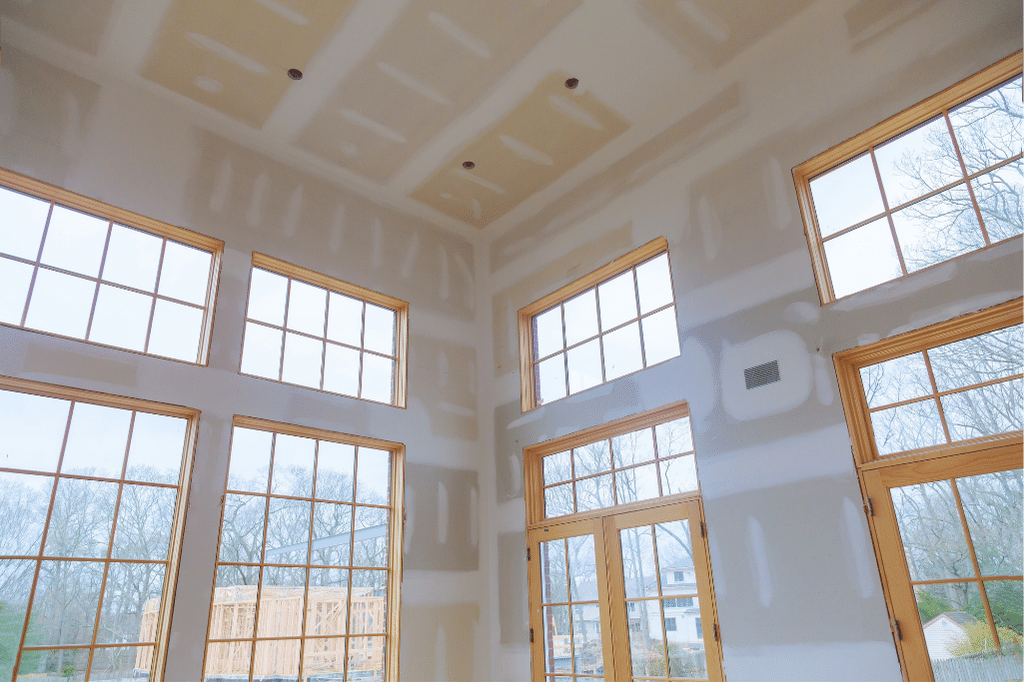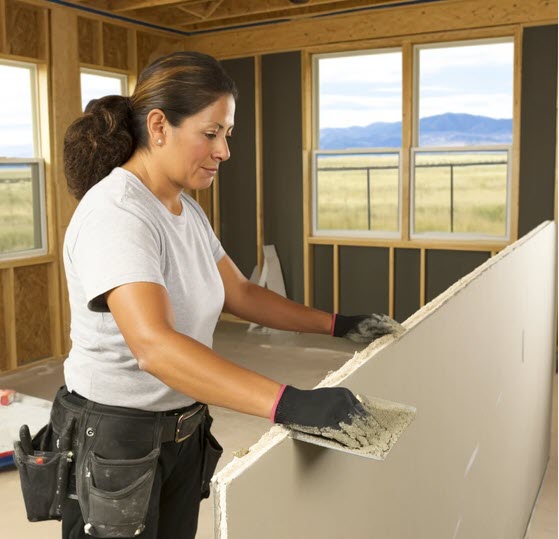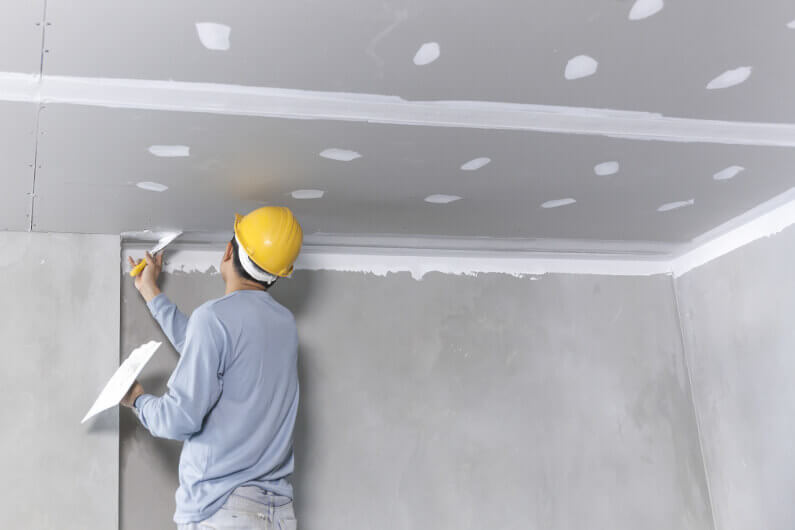Complete Overview to Reputable and reliable Drywall Installment
Drywall installment is a vital part of any building and construction or restoration project, requiring a careful approach to make sure both efficiency and dependability. It is important to discover the nuances of each step in the procedure, as they collectively contribute to the total success of the drywall installation.
Necessary Devices for Drywalling
When starting a drywall installment project, having the right devices is important for accomplishing a specialist finish. Essential devices include a drywall knife, tape measure, and a T-square, which are essential for exact dimensions and smooth cuts. A drywall lift is likewise extremely beneficial, specifically for ceiling setups, enabling simpler handling of heavy panels.
For securing the drywall, a cordless drill and drywall screws are needed. The drill should be equipped with a drywall little bit to ensure effectiveness and accuracy. Additionally, a key tool is the drywall saw, which facilitates cutting about electric outlets and various other obstacles.

Additionally, safety gear such as safety and security glasses and a dust mask are necessary to make sure individual safety and security throughout the installment process. Utilizing the right tools not just boosts the quality of the setup yet additionally streamlines the process, making the project much more efficient general.
Preparing the Space

Following, analyze the condition of the walls and ceilings. Fix any type of existing damage, such as openings, splits, or peeling paint, to ensure a smooth and also surface area for drywall application. Furthermore, check for electric outlets, pipes lines, and a/c air ducts, marking their areas to avoid difficulties during setup.
It is also vital to measure the area properly, identifying the measurements of the ceilings and walls to compute the appropriate amount of drywall required. Create a comprehensive strategy that includes the layout and positioning of the drywall panels.
Installment Techniques
Efficient installment techniques are vital for attaining a professional surface in drywall jobs. Correct measurement and cutting of drywall sheets are essential actions. Constantly gauge the wall surface space precisely, permitting any kind of switches or electrical outlets. Use an utility knife for clean cuts, scoring the paper face and snapping the board along the racked up line.
When hanging drywall, begin with the top and job downward, ensuring that the long edge of the board is perpendicular to the framing. Secure the sheets with screws as opposed to nails, which supply greater holding power and lower the risk of popping. Place screws every 12 inches along the sides and every 16 inches see this page in the area of the board.
For corners, make use of edge beads to achieve sharp, clean sides. When mounting on ceilings, make use of a drywall lift or have a companion assist in holding the sheets in position (drywall repair). Maintain a gap of about 1/4 inch over the flooring and ceiling to suit growth and contraction
Finishing Touches

Once the tape is in location, it's time to apply the initial coat of joint substance, also recognized as mud. Use look these up a 10 to 12-inch taping blade to spread the substance evenly over the taped joints, feathering the edges to blend with the bordering drywall.
Enable the substance to dry completely, usually 24-hour. After drying out, sand the surface lightly with fine-grit sandpaper to remove any kind of blemishes. drywall repair. Repeat the mudding and fining sand process, typically 2 to 3 coats, making certain each layer is flush and smooth with the drywall surface that site area
Typical Blunders to Avoid
Many DIY enthusiasts run into risks throughout drywall setup that can compromise the last results. One usual mistake is falling short to correctly reduce and determine drywall sheets.
An additional frequent mistake is improper attachment. Making use of as well couple of screws or nails can lead to loosened drywall, while overdriving bolts can create the paper to tear, damaging the framework. It's crucial to keep constant spacing, commonly every 16 inches, and to guarantee that bolts are flush with the surface.
In addition, not attending to wetness issues before installation can cause mold growth and architectural damages. Always evaluate the environment and use moisture-resistant drywall in high-humidity areas.
Conclusion
Reliable and effective drywall installation needs careful focus to detail throughout the procedure. By utilizing crucial devices, preparing the area adequately, and sticking to best practices in setup techniques, a flawless surface can be attained. Furthermore, cautious application of joint compound and tape during the finishing stage improves longevity and appearance. Preventing common errors further adds to an expert result, underscoring the value of precision and technique in successful drywall tasks.
It is necessary to discover the subtleties of each action in the process, as they collectively contribute to the overall success of the drywall installation.When beginning on a drywall installation job, having the right devices is important for achieving an expert surface.For securing the drywall, a cordless drill and drywall screws are required.Properly preparing the area is essential for an effective drywall installation.Reliable installation methods are vital for attaining a specialist finish in drywall jobs.